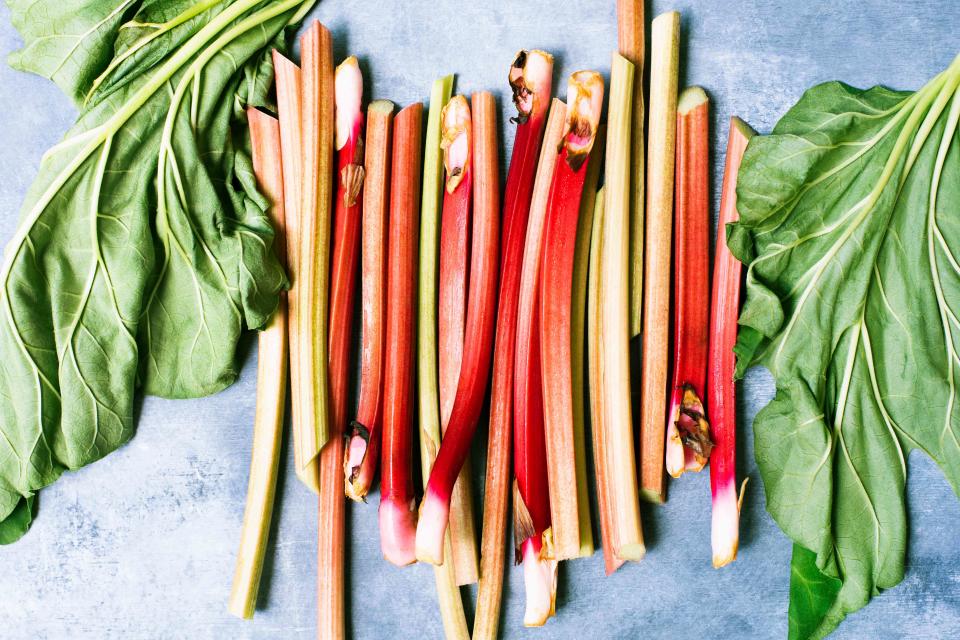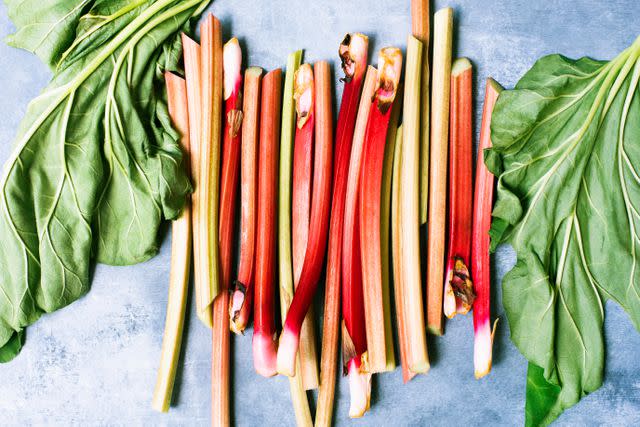How to Store and Freeze Rhubarb the Right Way
Rhubarb's season is short, but you can use the vegetable year round if you know how to freeze it properly.

Magdalena Niemczyk - ElanArt / GETTY IMAGES
A delicious and underutilized vegetable, rhubarb is at its peak from April until June. Also known as pieplant, rhubarb is a stalky perennial that has a tart flavor and bright color. While its leaves are inedible, the stalks are safe to eat and quite delicious, whether you’re baking it into a dessert, enjoying it as a side dish, or making it the star of your meal. If you harvested (or purchased) more rhubarb than you know what to do with, you may be wondering how to preserve this warm-weather vegetable. The method that extends its shelf life the longest? Storing it in the freezer.
Related: 36 Rhubarb Recipes That Will Inspire You to Use This Springtime Vegetable
How Long Rhubarb Lasts
Rhubarb is at its freshest shortly after being harvested. But if you bought it from the grocery store or plucked it from your garden and need to store extras, the vegetable will stay fresh for one to two weeks when stored correctly.
How to Store Rhubarb
Rhubarb is best stored in the refrigerator. “Ideally, remove and throw away the leaves, then store fresh, unwashed, rhubarb stalks in the refrigerator wrapped in a food-grade plastic bag,” says Margarethe A. Cooper, PhD, assistant professor of practice and Victor P. Smith endowed chair in Food Safety Education at the University of Arizona. “Storing rhubarb on the counter may lead it to drying out more quickly.”

Magdalena Niemczyk - ElanArt / GETTY IMAGES
How to Freeze Rhubarb
If you have excess rhubarb you’d like to freeze, start by washing it thoroughly. “You do not need to wash the stalks until you are ready to use them or freeze them,” says Cooper. “When you are ready to use fresh rhubarb, rinse them for 20 seconds with water and dry on a clean cloth.”
Remove and throw away leaves and trim the ends of the rhubarb.
Rinse with water and dry with a clean cloth.
Cut the rhubarb to a size that is convenient for how you plan to use it in future recipes.
Place the cut rhubarb on a baking sheet in a single layer and freeze. (This prevents the formation of ice crystals).
Transfer the rhubarb to a freezer-safe bag (leaving it about 1/3 of the way empty).
Remove as much air as possible.
Seal the bag and place it in your freezer.
How to Blanch Rhubarb
While blanching isn't necessary, it does help preserve nutrients and flavor. "Blanching inactivates enzymes that can reduce the nutritional quality of food," says Cooper.
Remove and throw away leaves and trim the ends of rhubarb.
Rinse with water and dry with a clean cloth.
Cut the rhubarb to a size that is convenient for how you plan to use it in future recipes.
Boil a pot of water.
Add the sliced pieces to boiling water for one minute, then immediately remove them from water.
Immediately place the pieces in ice cold water.
Allow the pieces to dry on a clean kitchen towel.
Freeze following the instructions above.
How to Use Frozen Rhubarb
Rhubarb is commonly used in both sweet and savory dishes. Although it’s tart and acidic, it pairs well with sweet ingredients like sugar, fruit, honey, and sweet wine—which is why it’s often found in desserts. You can use frozen rhubarb the same way as fresh: in sauces, pies, crumbles, and beyond.
Although thawing the rhubarb isn’t necessary for cooking, you can do so by leaving it out for a few hours if you wish. “Since you typically cook rhubarb, you won’t care much if the texture of the stalk changes when frozen and then again when thawed,” says Ronna Welsh, the author of The Nimble Cook and the owner and chef instructor at Purple Kale Kitchenworks in Brooklyn, NY.

